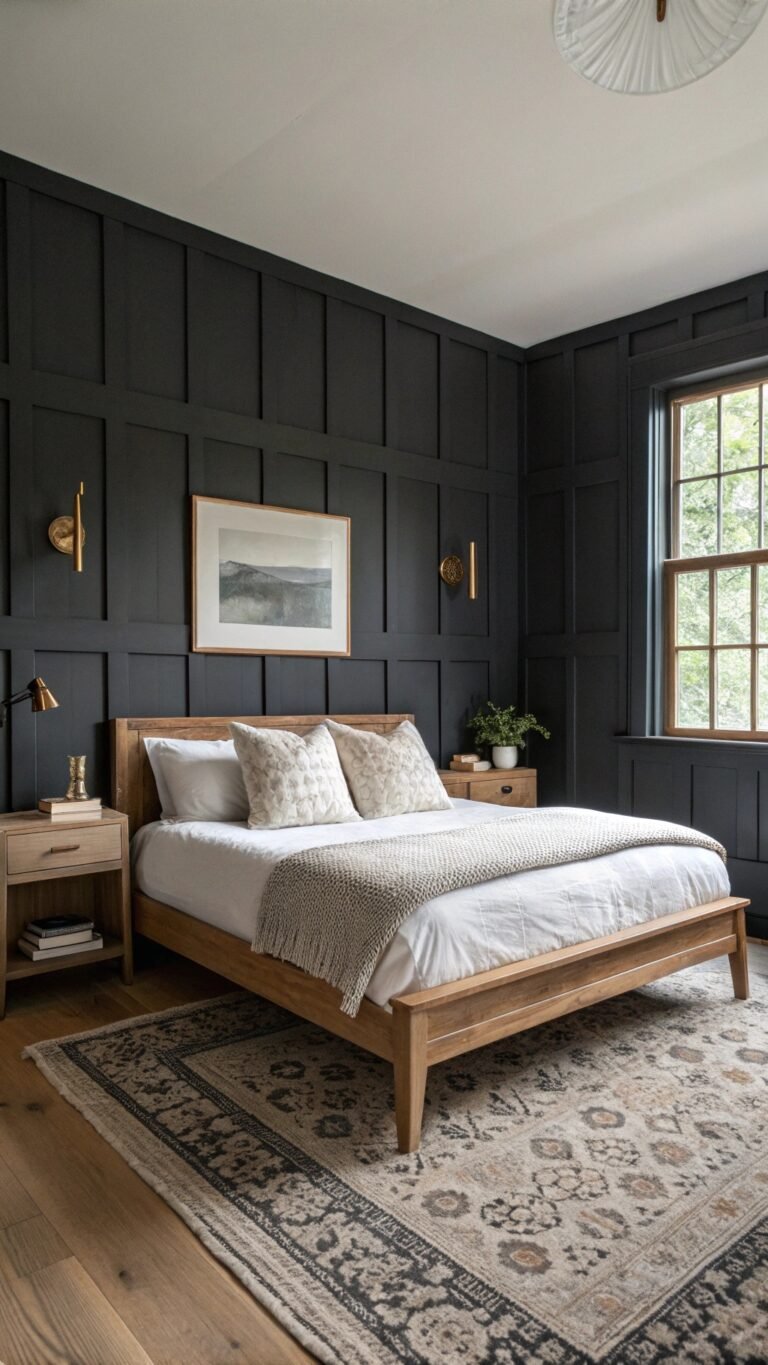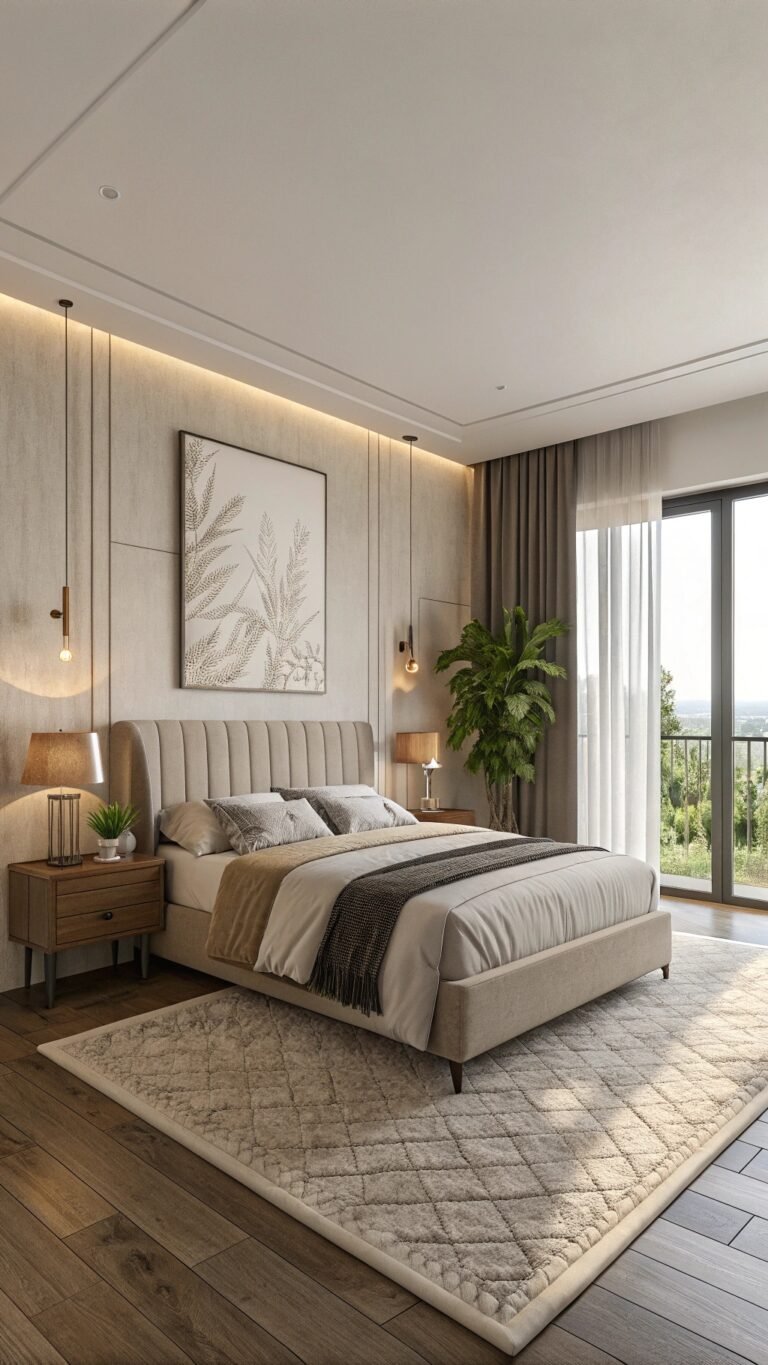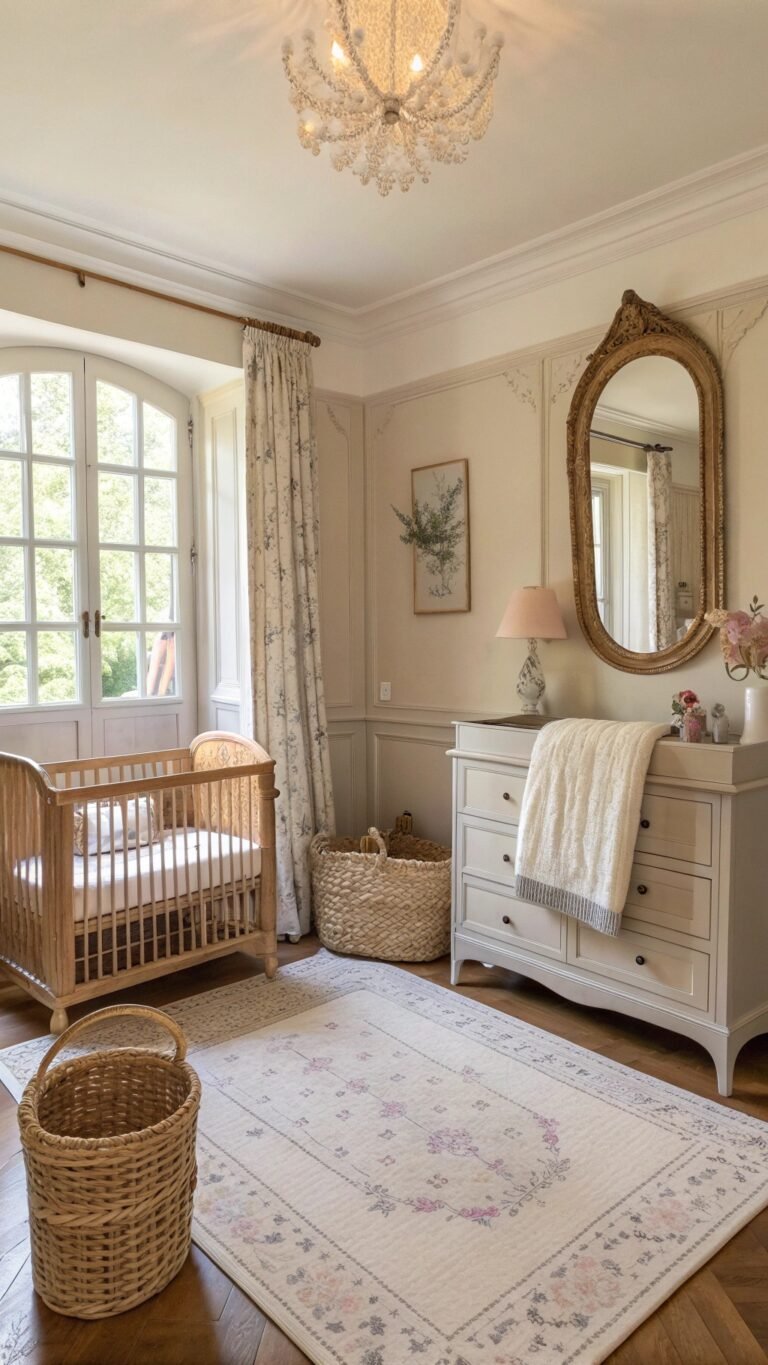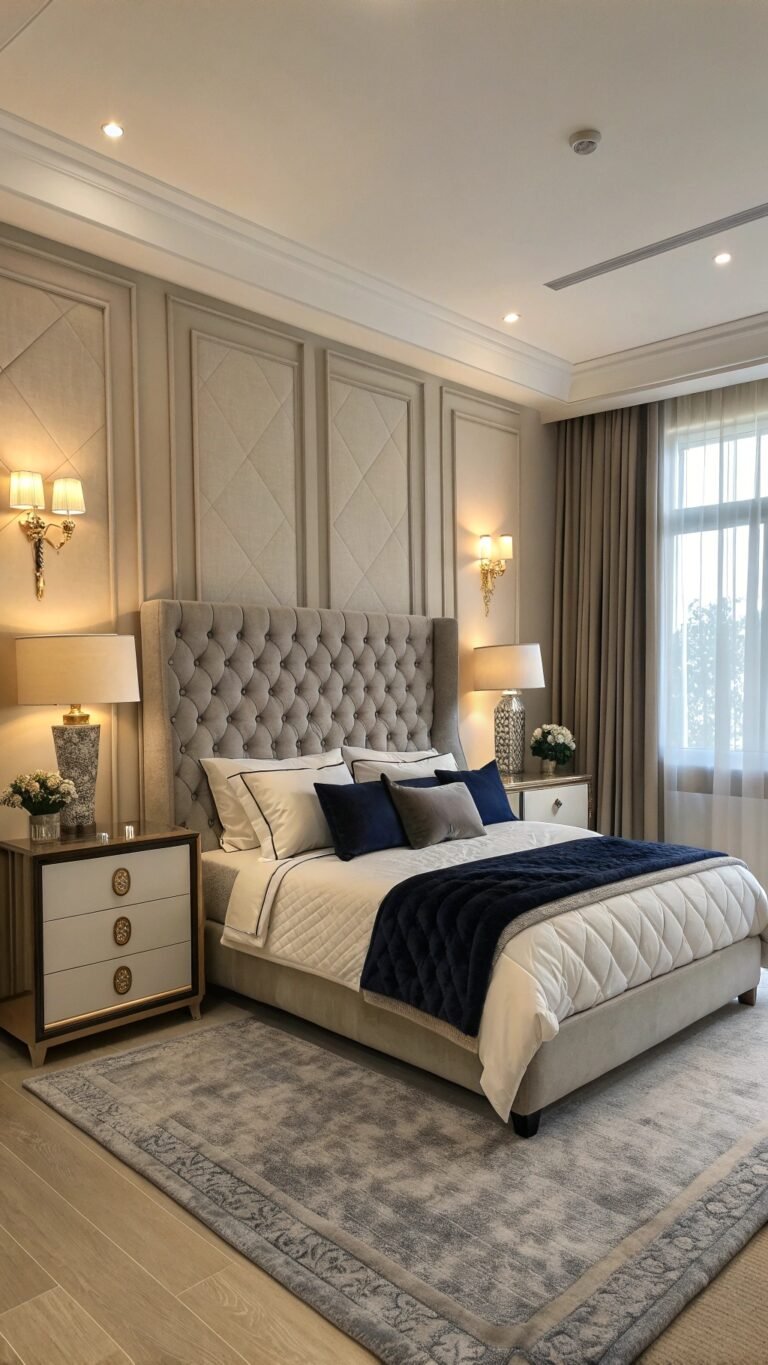Small Bedroom Ideas: 14 Space-Savvy Looks That Feel Bigger
Small bedroom ideas are having a moment because they deliver maximum impact with minimal footprint—and you don’t need a renovation to see results.
From vertical tricks to clever lighting and storage, these space-smart updates make tight rooms feel calm, functional, and surprisingly luxurious. Try one hero move, support it with two simple tweaks, and watch the room expand.
1) The Vertical Stretch (Tall Drapes & Lines)
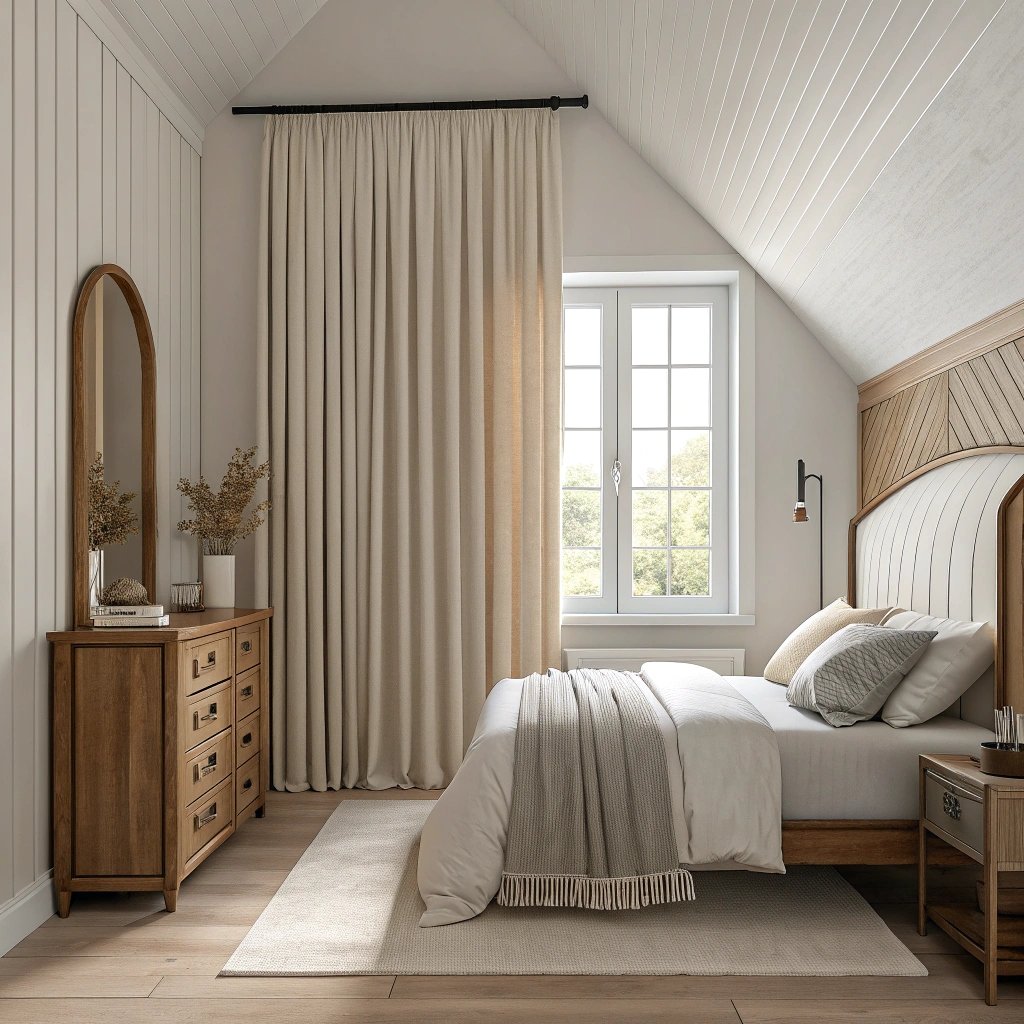
Pull the eye upward with full-height elements: hang curtain rods just below the ceiling and let panels kiss the floor, use an arched or tall headboard, and consider vertical paneling or slat walls behind the bed. A floor-to-ceiling wardrobe or bookcase adds function and creates the illusion of taller walls and higher ceilings in compact rooms.
What makes this idea unique:
Instead of busy patterns, use tone-on-tone textures—linen drapery, ribbed paneling, slim sconces—to keep vertical lines uninterrupted. Add a narrow, tall mirror to echo the height and bounce light deeper into the space. This approach compresses clutter visually and makes even low ceilings feel lofty without changing the architecture or layout.
2) Built-In Effect on a Budget (Wrap-Around Storage)
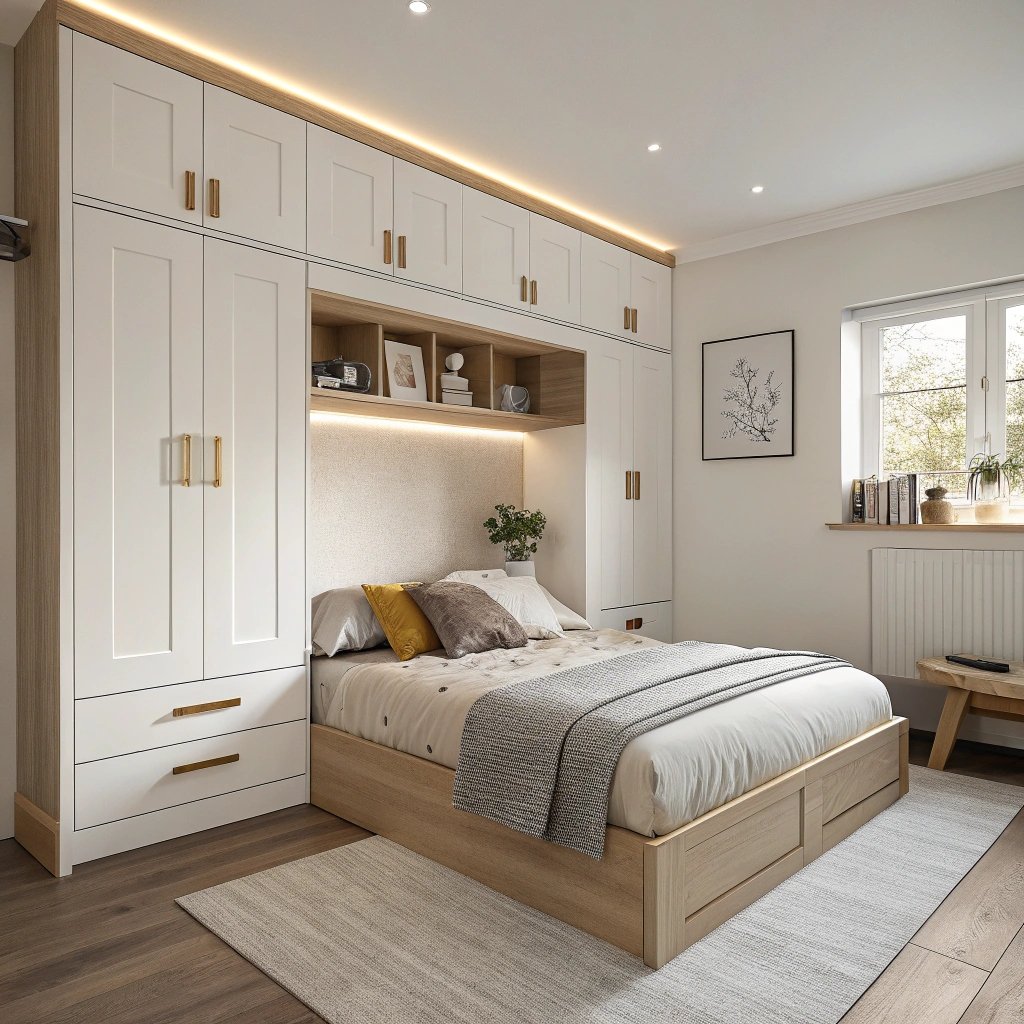
Create a “bed wall” with wardrobes flanking the headboard and a bridge cabinet or shelf overhead. This turns dead wall space into concealed storage for linens, luggage, and out-of-season clothing. Use shallow depths on the sides and keep the center open so the bed remains visually light and inviting.
What makes this idea unique:
Match cabinet color to the wall (or use a subtle micro-contrast) so the unit reads architectural, not bulky. Add integrated, dimmable lighting under the bridge shelf to function as reading light and a glowing headboard halo. You’ll get a custom built-in look, better storage, and a calmer silhouette for small rooms.
3) Monochrome Micro-Palette (Tone-on-Tone)
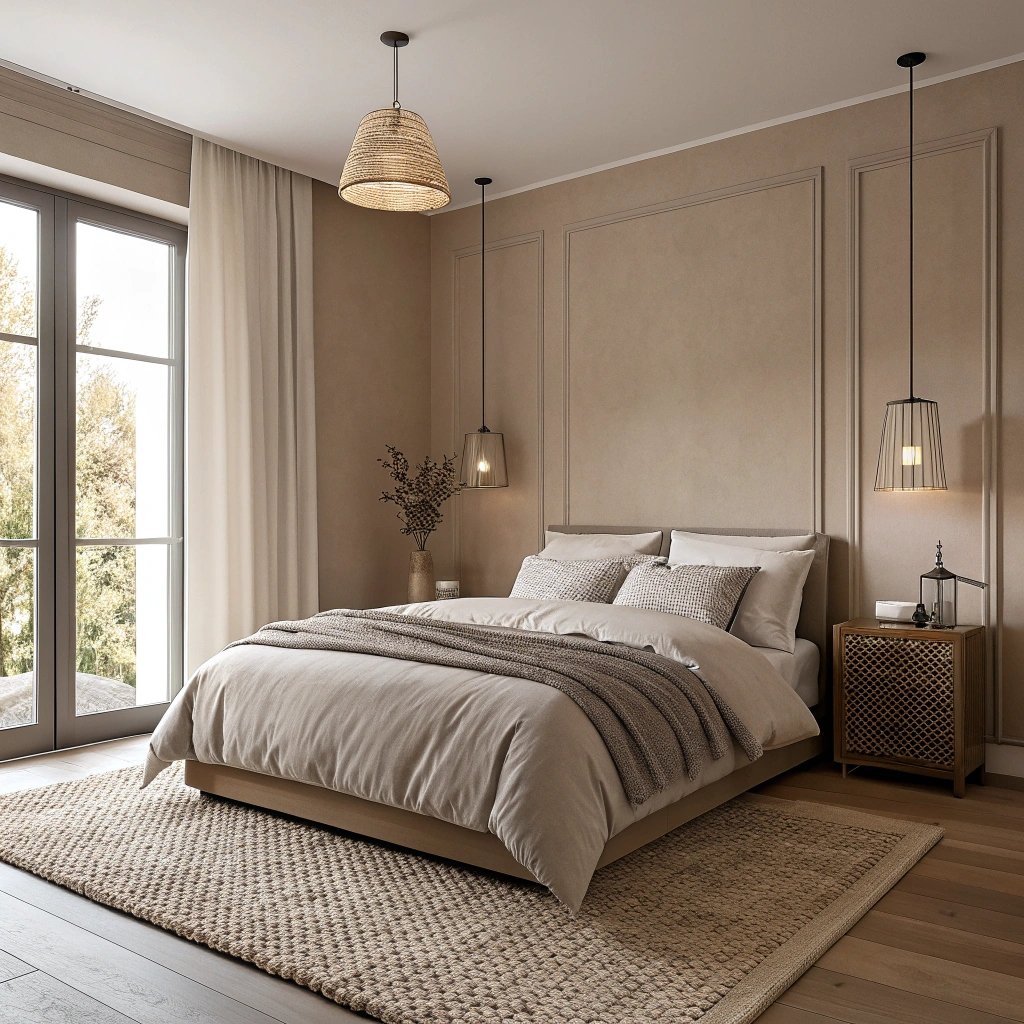
Use one hue in varied shades across walls, bedding, curtains, and rug to reduce visual fragmentation. A warm greige or soft clay creates cohesion so the eye reads the room as a single field rather than many small objects. Texture—bouclé, linen, wool—adds depth without cluttering the view.
What makes this idea unique:
Layer subtle sheen differences: matte walls, textured bedding, satin-finish lamps, and a lightly lustrous throw. The gentle shift in reflectivity produces richness while preserving calm. It’s an easy path to elevated minimalism that photographs beautifully and makes a tiny footprint feel intentionally curated.
4) Floating Everything (Nightstands, Shelves, Sconces)

Lift furniture off the floor to expose more visible baseboard and rug—instant visual square footage. Wall-mount slim nightstands, add floating shelves instead of bulky bookcases, and use plug-in wall sconces. The open floor edge feels cleaner, easier to vacuum, and less claustrophobic in tight layouts.
What makes this idea unique:
Choose shallow profiles (20–25 cm) and run a cable cover painted to match the wall for a built-in vibe. A single floating ledge behind the bed can double as headboard and shelf, eliminating side tables entirely. The result is sleek, practical, and renter-friendly.
5) Storage-First Platform (Underbed Drawers)
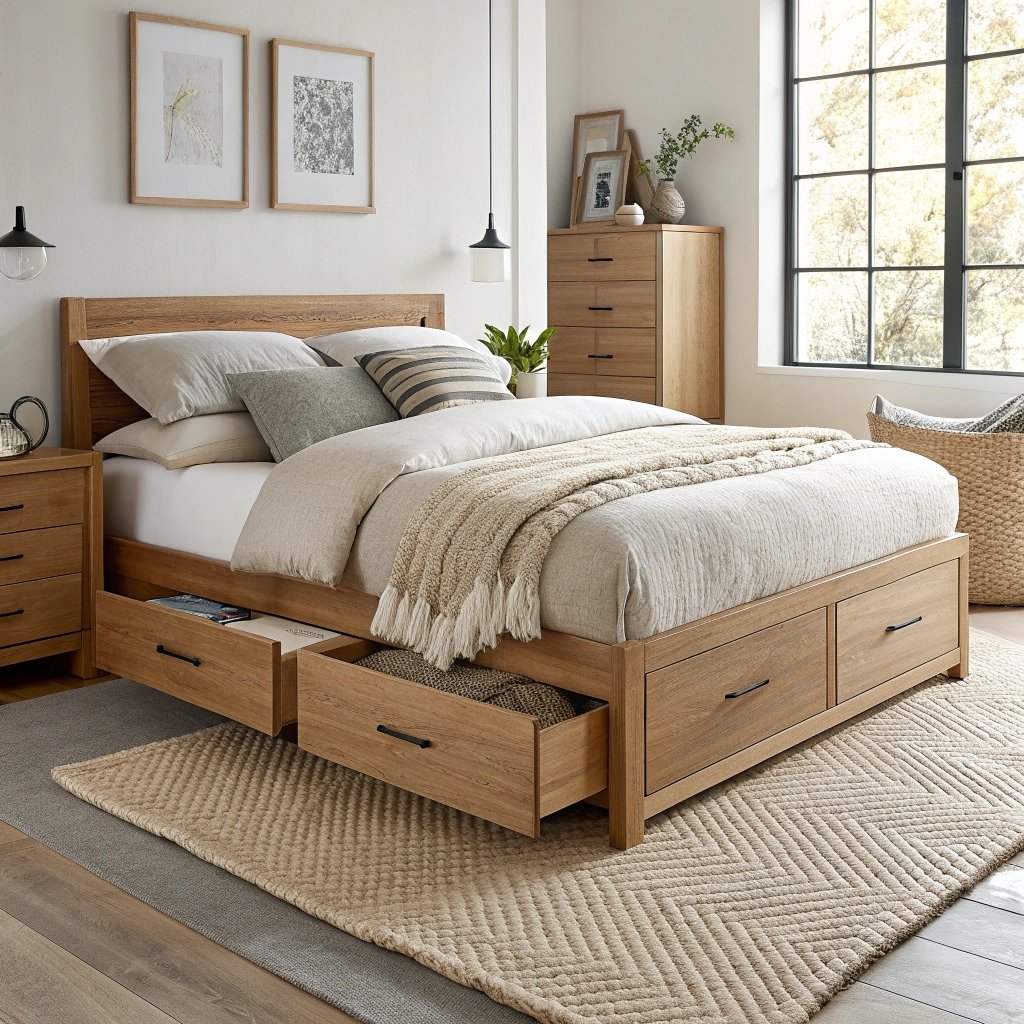
Turn the biggest volume—the bed—into hidden storage by choosing a platform with drawers or lift-up slats. Stash off-season clothing, bedding, and bulky items without filling the closet. Keep bedding simple and textural so the base reads tailored and the room stays calm.
What makes this idea unique:
Opt for a fabric or wood tone that matches the rug to visually merge bed and floor. Two large drawers on each side are more space-efficient than many small ones. Add soft-close hardware and inset pulls to keep the lines clean and snag-free in tight quarters.
6) Mirror & Gloss Amplifiers

Bounce light and extend sightlines with an oversized wall mirror, mirrored wardrobe doors, or a high-gloss lacquer dresser. Position mirrors opposite a window or beside it to capture and redirect light deeper into the room. Keep frames slim to maximize reflective surface area.
What makes this idea unique:
Use one large mirror rather than multiple small ones to avoid a fragmented look. Pair reflective planes with matte textiles—linen, wool—to balance glare and feel. A mirrored sliding door counts as both storage and spatial trickery, freeing swing space while doubling perceived depth.
7) Corner Bed & Asymmetry
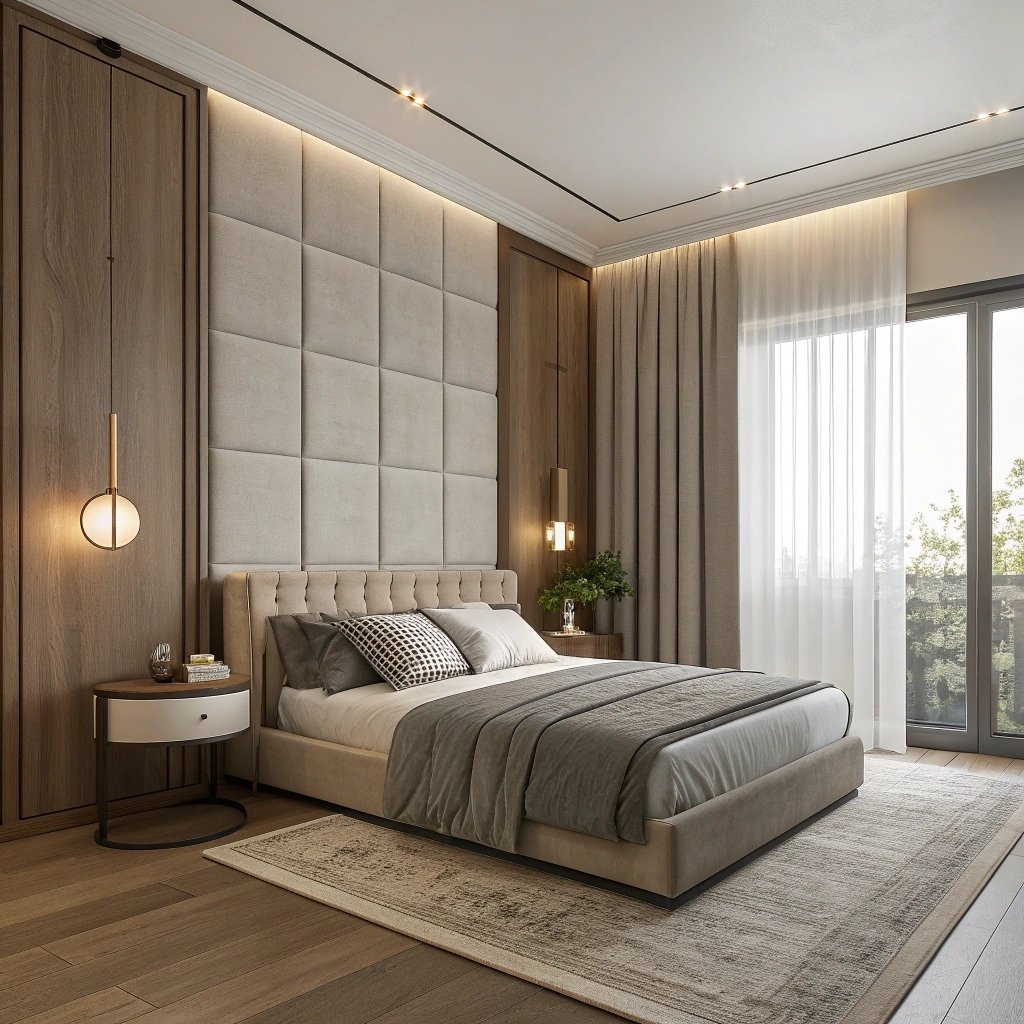
Push the bed into a corner and style it like a daybed with layered pillows along the wall side. This opens a walkway and frees space for a small desk or wardrobe. Asymmetry feels intentional when you add a single statement sconce and a compact side table.
What makes this idea unique:
Use a wraparound headboard (L-shaped cushion or paneled corner) for comfort and a built-in feel. A long lumbar cushion and bolster keep the look tidy during the day and practical at night. It’s a studio-apartment trick that reads stylish rather than compromised.
8) Sliding or Pocket Door Swap
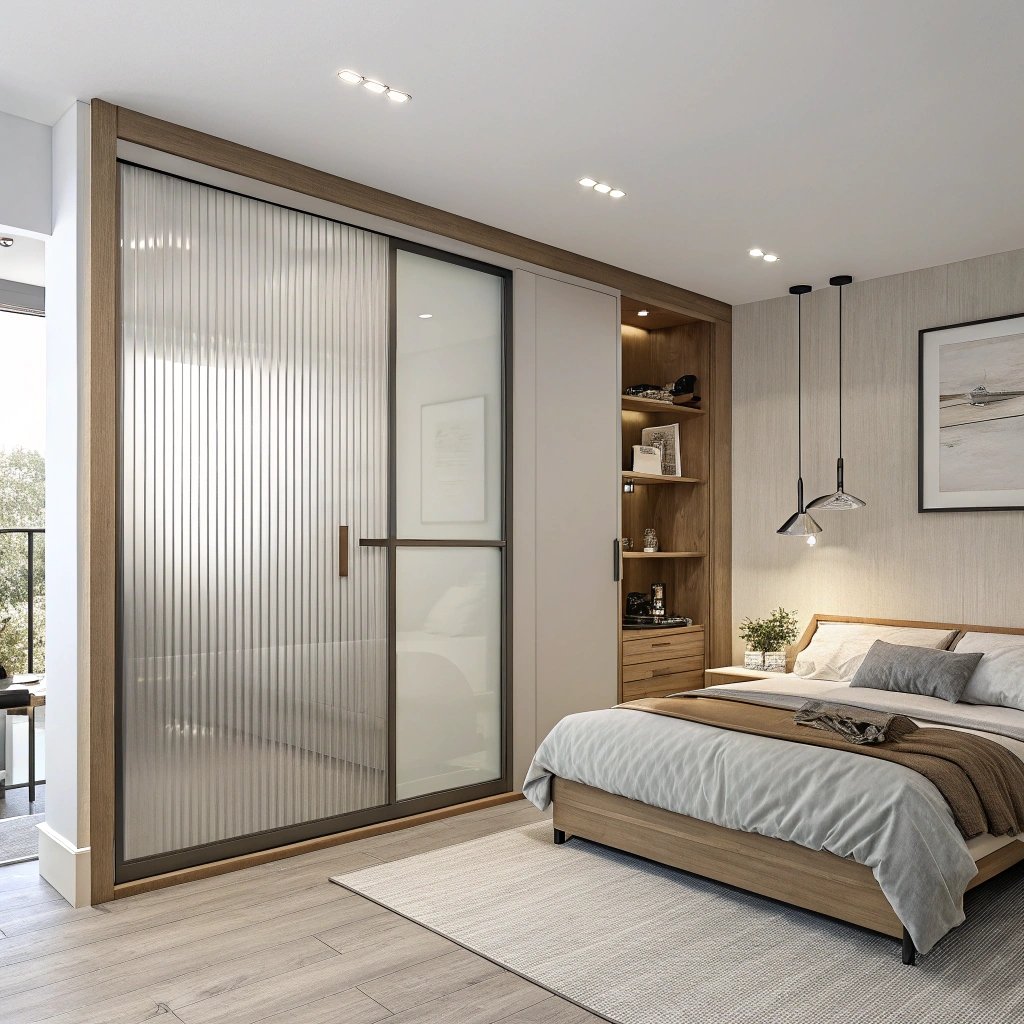
A traditional swing door eats precious clearance. Replace it with a pocket door (if renovating) or a sleek wall-hung slider/barn door for a renter-friendly fix. The saved arc makes room for a wardrobe, desk, or full-size nightstand you couldn’t fit before.
What makes this idea unique:
Color-match the door to the wall for a seamless plane, or choose translucent reeded glass to share light between rooms while keeping privacy. Add a flush pull and soft-close hardware for a refined feel that elevates the entire envelope of a tiny bedroom.
9) Foldaway Workspace (Murphy Desk / Wall Secretary)
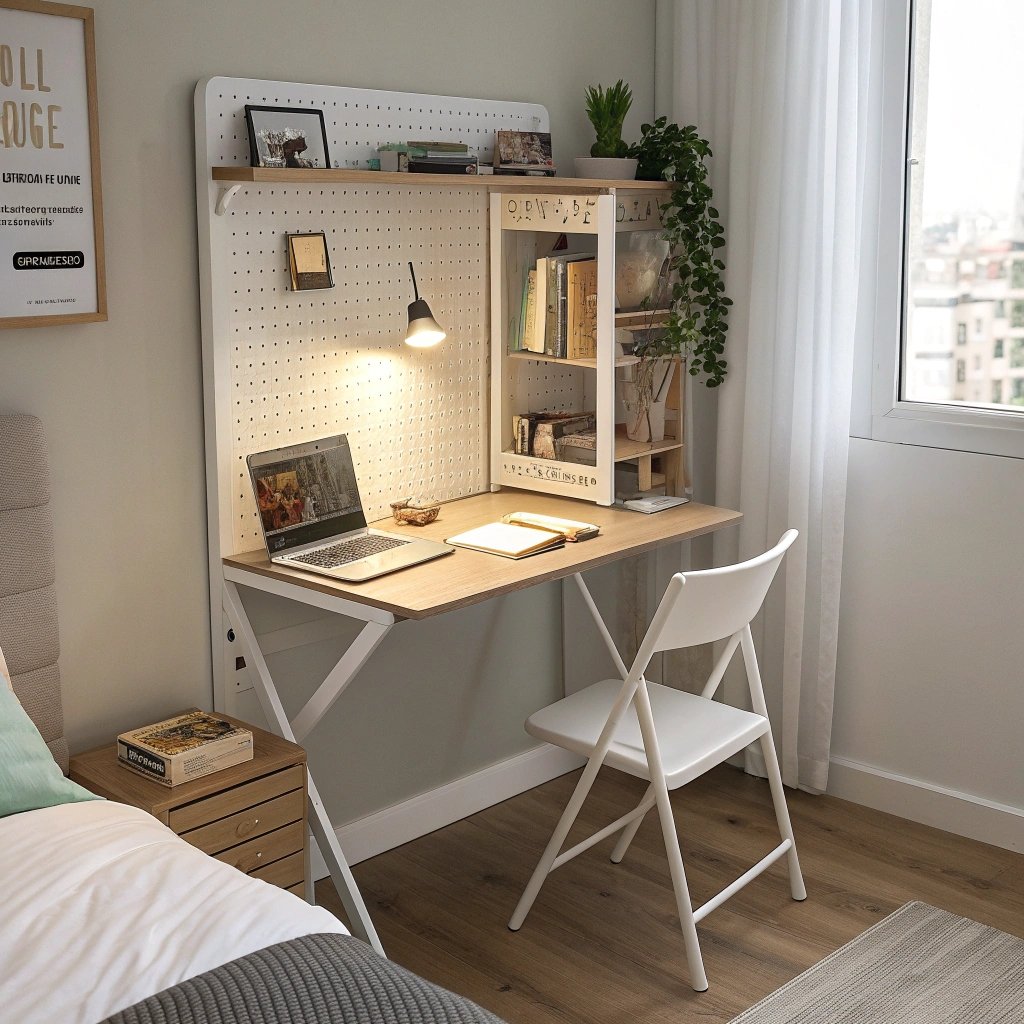
If you work from the bedroom, install a wall-mounted fold-down desk that hides away after hours. Pair with a lightweight, stackable chair and a narrow task lamp or under-shelf LED. Keep the desktop shallow and the width aligned with the bed or window to maintain visual order.
What makes this idea unique:
Treat the closed desk front as decor: cork, fabric pinboard, or fluted wood paneling. Inside, use pegboard or magnetic strips for vertical organization so supplies don’t sprawl. It’s a multi-role solution that keeps sleep space calm when the “office” is closed.
10) Layered Lighting for Depth
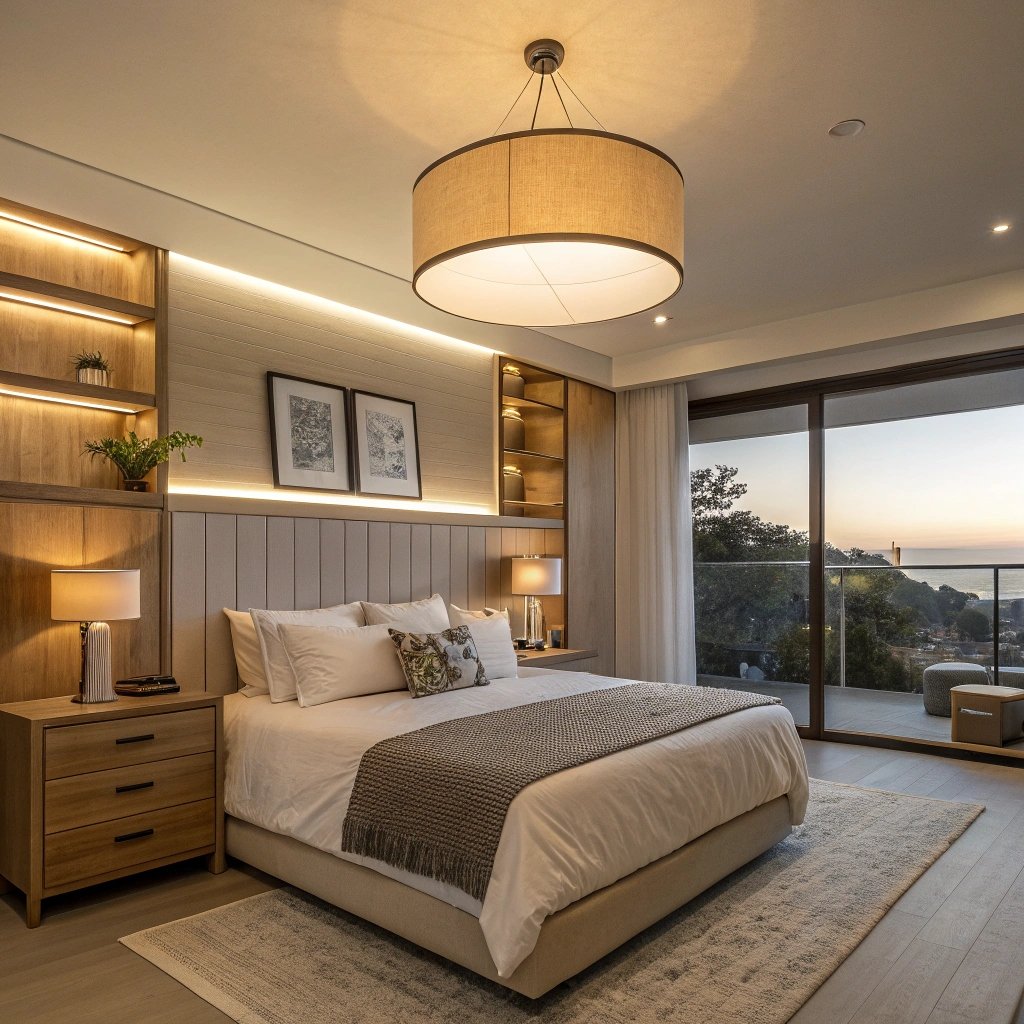
Use three layers—ambient (ceiling), task (bedside/desk), and accent (cove, under-shelf, or art lights)—to sculpt a small room. Warm bulbs (2700–3000K) feel cozy and flatter textures. Independent dimmers let you dial brightness for reading, winding down, or early mornings without waking a partner.
What makes this idea unique:
Hide LED tape atop a wardrobe or picture ledge to bounce light off the wall or ceiling and visually push boundaries outward. Combine a small-scale pendant with plug-in sconces to save surface space. Thoughtful lighting makes compact rooms feel designed, not improvised.
11) Big Art, Small Room
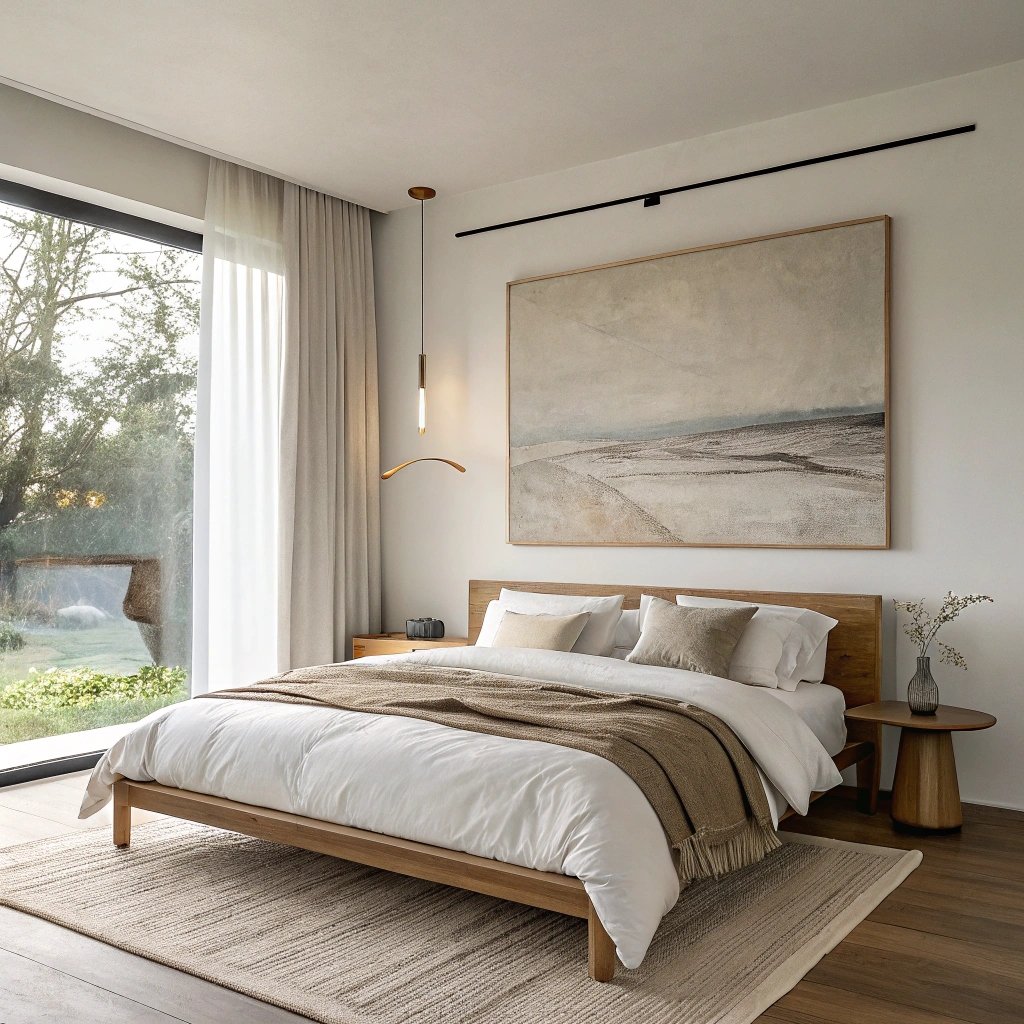
Counterintuitively, one oversized artwork or a clean diptych above the bed simplifies the visual field better than a busy gallery wall. The large scale anchors the bed and reduces “noise,” making the room feel calmer and more expansive. Keep frames thin and colors sympathetic to bedding.
What makes this idea unique:
Choose low-contrast art (neutrals, soft abstract, landscape haze) so the piece reads like a window or textural panel. Add a picture light to pull focus upward and create a designer finish. The big gesture telegraphs confidence and quiets everything else.
12) Rug to Scale (and Strategically Placed)
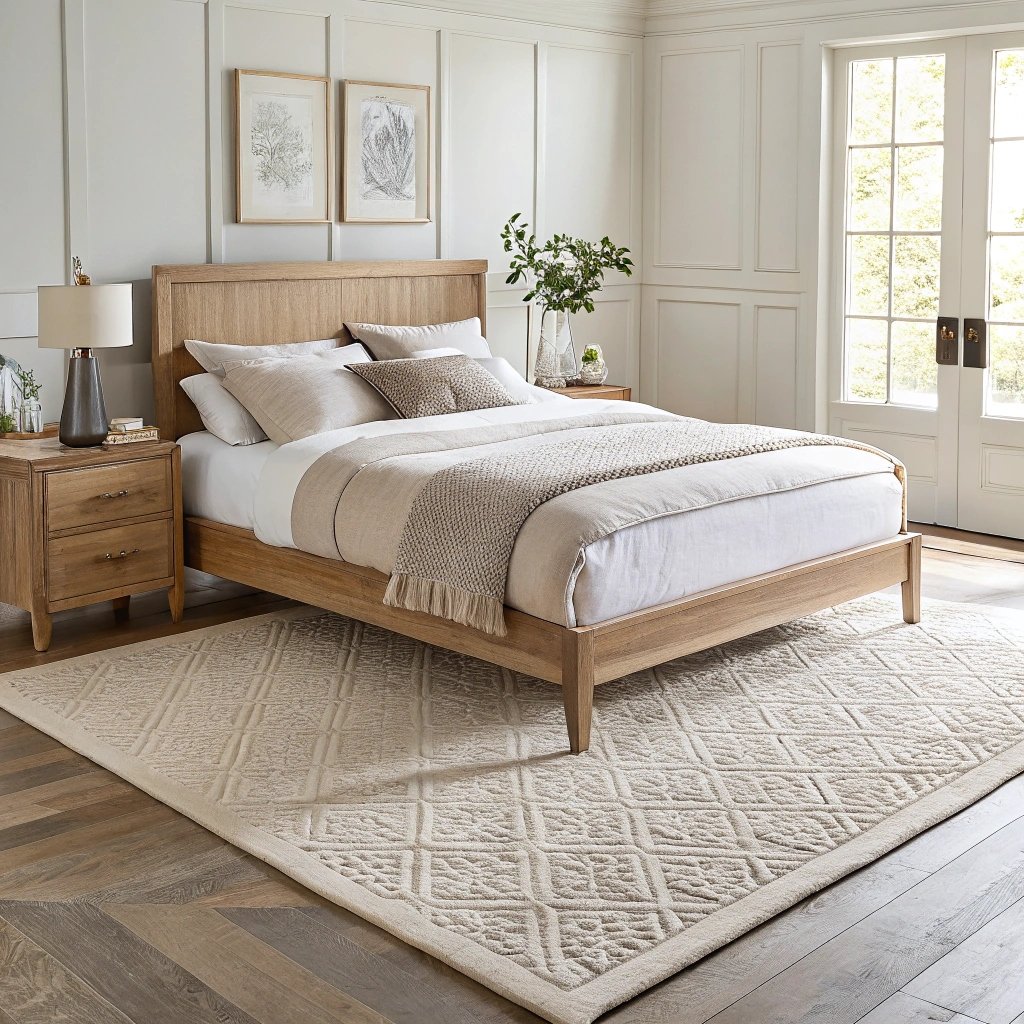
An undersized rug shrinks a room. Use a 6×9 under a full or a generous 8×10 under a queen (at least the front two-thirds of the bed on the rug). The soft border defines the sleep zone and adds comfort underfoot, especially in rooms with hard floors.
What makes this idea unique:
Pick a low-contrast, micro-patterned rug that hides dust and visually blends with flooring and bedding. Slide it forward so there’s ample rug at the sides where feet land, not wasted under the headboard. The result feels tailored and bigger than the square footage suggests.
13) Window Ledge & Light Play
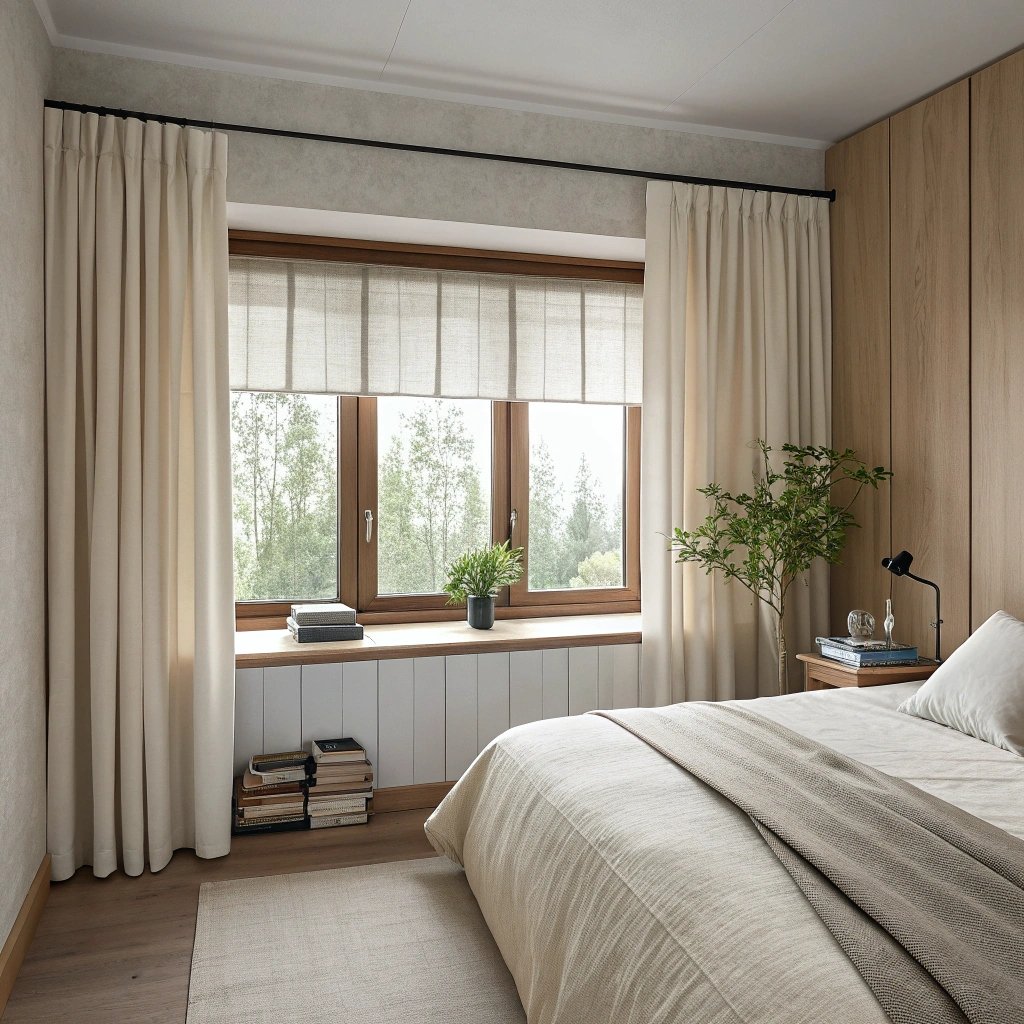
Treat the window wall as a feature: add a slim ledge at sill height for books and plants, hang curtains high and wide, and pair with a blackout roller shade for function. The ledge creates a perch and frees nightstand space, while wider curtain placement floods the room with daylight.
What makes this idea unique:
Keep ledge depth minimal (12–18 cm) and finish it to match trim for a built-in look. Use sheer panels during the day to soften glare without blocking light. The whole composition reads intentional, bright, and airy—key traits in small bedrooms.
14) Micro Zen (Low Profile, High Calm)
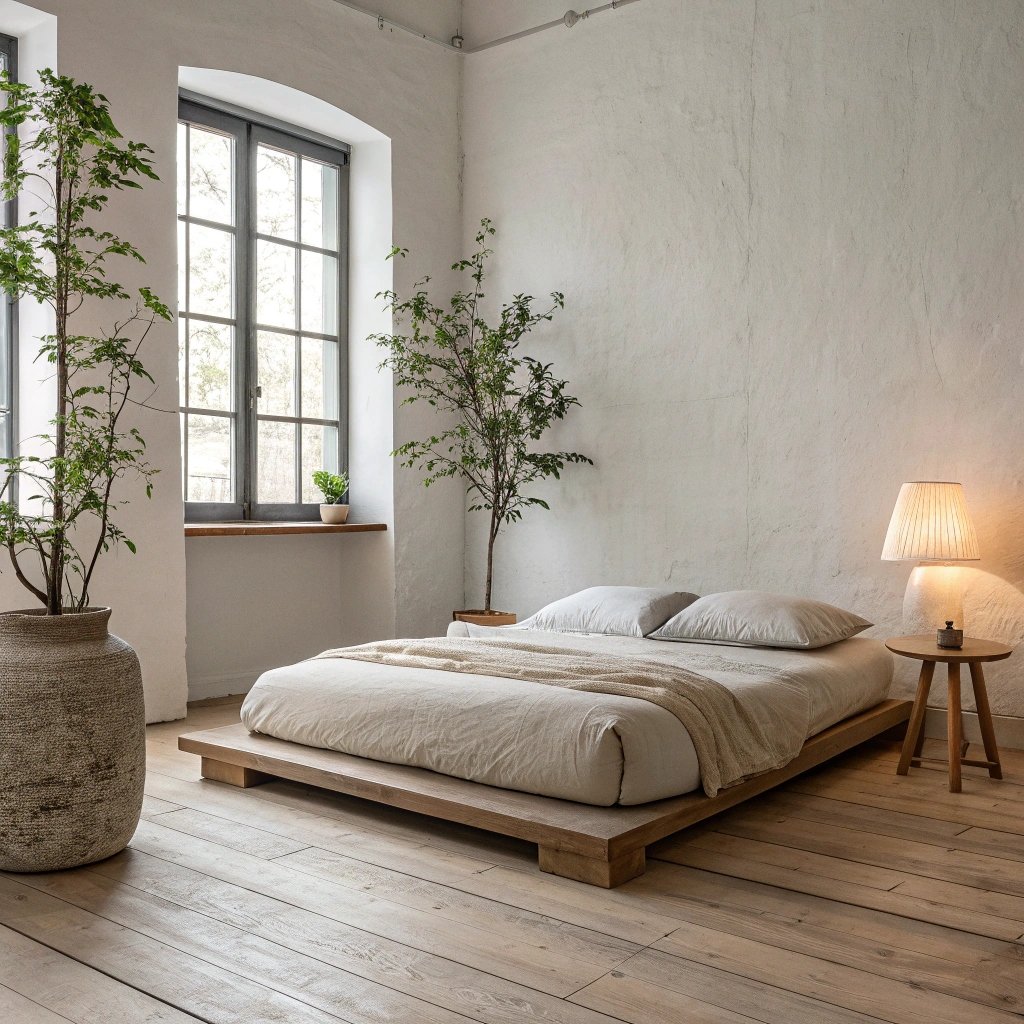
Go low and simple: a floor or low platform bed, minimal furniture, and generous negative space. Stick to three materials—light wood, linen, ceramic—and keep surfaces nearly bare. The low sightline makes walls feel taller and turns even a tiny footprint into a tranquil retreat.
What makes this idea unique:
Add a single sculptural element (stone stool, ceramic lamp) and a medium plant for life. Use a sound machine and diffuser on a small tray to layer sensory calm without visual clutter. This pared-back approach is sustainable, affordable, and refreshingly easy to maintain.
Quick Tips to Maximize Small Bedroom Ideas
Choose one hero change (door swap, bed with storage, or built-in look) and support it with two small tweaks.
Keep a tight palette and vary textures rather than colors.
Mount what you can, hide cords, and let floors and walls stay as uninterrupted as possible.

